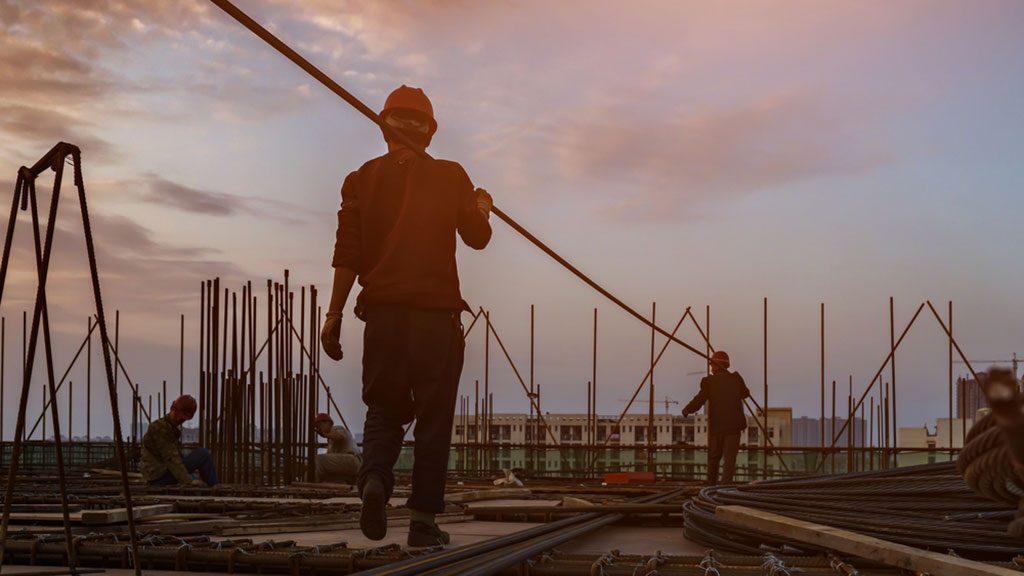A new global report from the Royal Institution of Chartered Surveyors (RICS) is good news for Canadian constructors, confirming an upward trend in Canada since the third quarter of last year and reflecting expectations of 12 more months of even more positive prospects.
The RICS Q2 2021 Construction Monitor, released in early August, tracks sentiments from the construction sector as expressed in interviews.
The monitor found that according to the Q2 interviews Canadian respondents felt there would be increased workloads and a spike in hiring over the next year.
Fifty-two per cent more Canadian survey participants are now anticipating an increase in headcounts over the coming year and they foresee a more positive trend in profit margins as well.
“The feedback we’re getting across the board paints a pretty positive story for the construction industry,” said RICS chief economist Simon Rubinsohn of the Canadian survey.
“It’s certainly in positive territory now, that’s what we’re being told. We’ve got their responses from across the country and they’re generally saying that they’re seeing things are moving in the right direction.”
The monitor’s results across the Americas show activity gaining further impetus over the second quarter, as all sectors returned to growth at the aggregate level for the first time since the pandemic started. Rubinsohn explained the results did not explore subsectors of non-residential such as retail or office.
But the solid news is tempered by respondents’ concerns that rising cost pressures and skills shortages are becoming more prominent features of the market and could impede activity if they continue to worsen.
Across the Americas, total construction costs are now seen as increasing by nine per cent, with material costs set to drive the bulk of the rise and labour costs likely to contribute.
Rubinsohn noted both the supply chain/materials disruption and the skills shortage were global issues. Eighty-five per cent of respondents worldwide cite rising material costs to be a constraint on activity while two-thirds of respondents were concerned about a shortfall in labour and skills.
Half cited a lack of quantity surveyors and other managers as a problem.
Rubinsohn explained that RICS uses an index to quantify the sentiments, which is different from hard data but has been shown in two recent studies to strongly correlate with actual future market performance.
“The general point is the sentiment data was recognized in those reports as having value and being useful as a lead indicator. Even though it’s not the dollars that you’re counting, they’re looking at people’s views, and people’s views are a pretty reliable guide to what will happen to those dollars as we move forward.”
Canada was eighth in the RICS construction activity index, which was very positive, he said.
“With these monitors, I think they captured to a large extent what’s going on specifically in the industry, but there’s also probably a little bit of an overlay reflecting the general mood of the economy and everything else that’s going on,” Rubinsohn said.
Another good sign is that the sentiment indicators are improving each quarter, he said.
“Looking at the global numbers, the Canadian numbers, the U.K. numbers, the construction industry has gradually understood what it needed to do to work itself through this and we’ve actually had some positive numbers coming through.
“Certainly, the Q2 numbers look better than they have been the previous quarters.”
Improvements in consecutive quarters “give me, one, confidence that we’re on a positive upward trajectory in terms of the data, it’s consistent,” said Rubinsohn. “And it also tells me that the underpinnings around this, the component parts, are becoming more solid, more broadly balanced as well.”
The rise in costs is, however, creating uncertainty about profits, he said.
“It’s a common story, not just in Canada, it’s because the building materials and shortage of labour are driving up those cost equations. There’s not really a conviction that this is going to be a solid rebound in profits at this stage, so I would view it in that much more tentative way.”






Recent Comments
comments for this post are closed